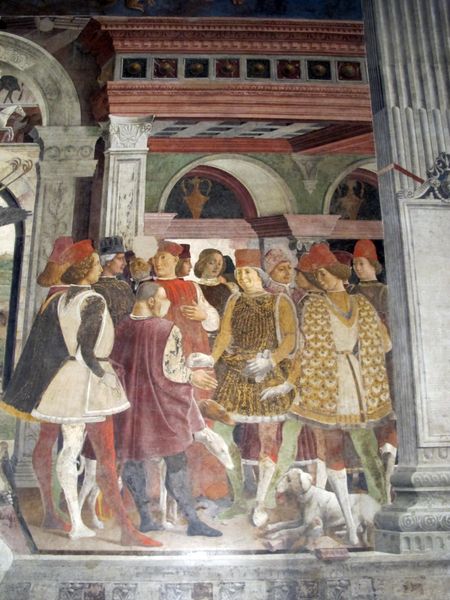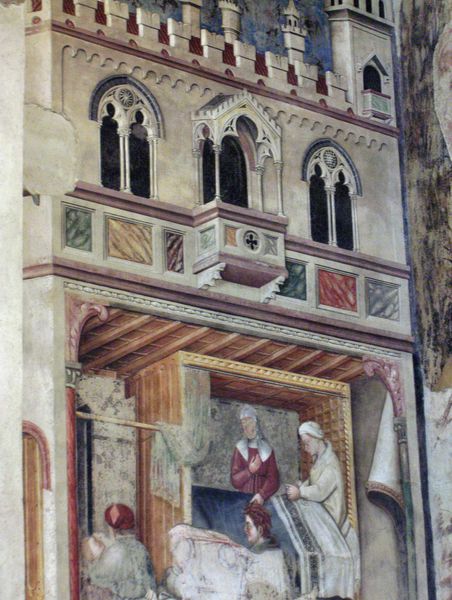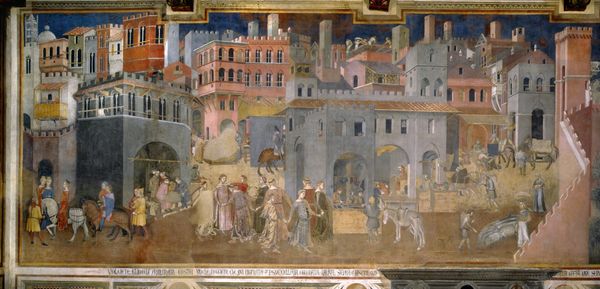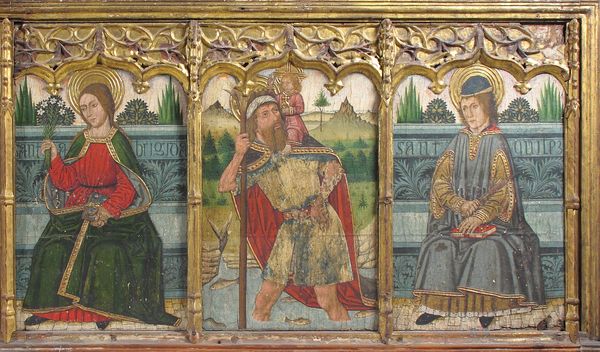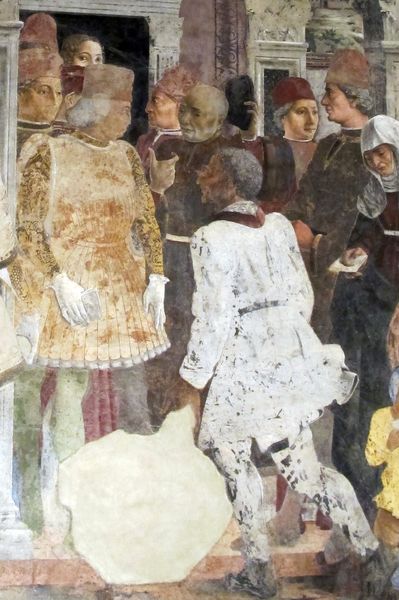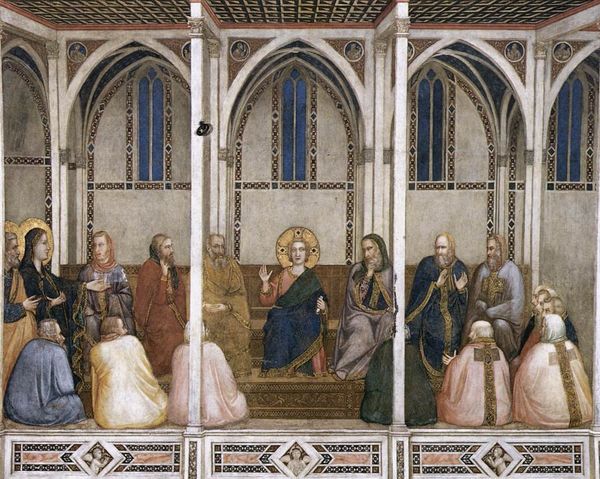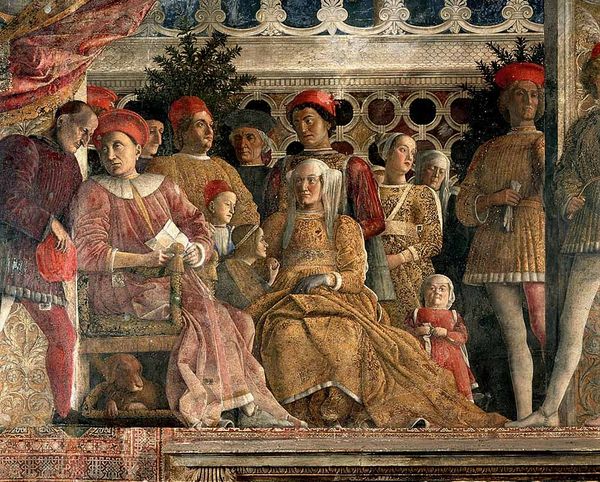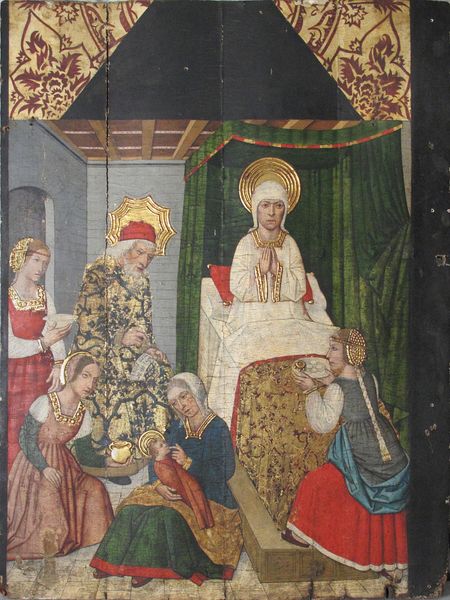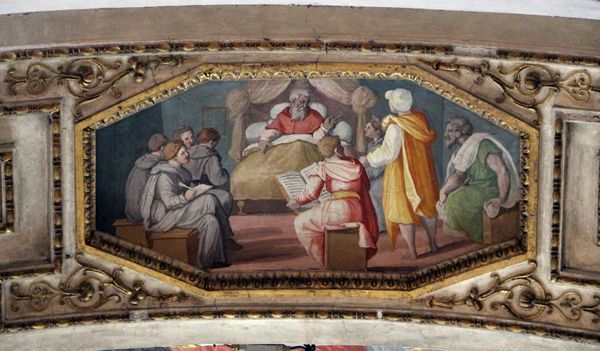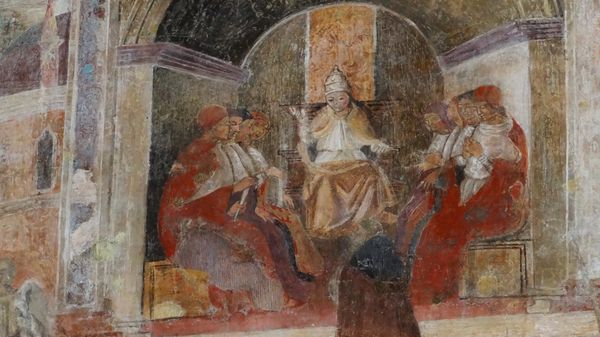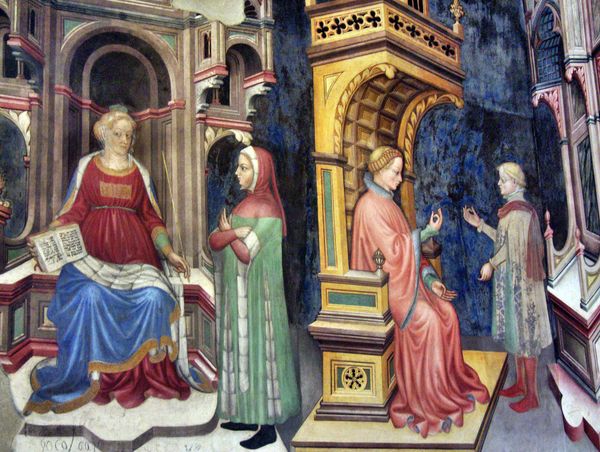
fresco
#
portrait
#
fresco
#
history-painting
#
italian-renaissance
#
early-renaissance
Copyright: Public domain
Curator: Today, we're examining a detail from Francesco del Cossa's "April" fresco, painted around 1470, as part of the cycle in the Palazzo Schifanoia. It is crafted using fresco technique, a process of painting directly onto wet plaster. Editor: My immediate impression is one of controlled festivity. The colours are muted yet rich, and there’s a sense of order despite the number of figures depicted. The rigid architectural backdrop somehow amplifies the human interactions in the foreground. Curator: Indeed, what's fascinating here is how Cossa balances a courtly ideal with a palpable engagement in civic affairs. Look at the meticulous representation of garments – the luxurious fabrics and precise tailoring indicating a society deeply invested in material display. And then consider the fresco itself. Pigments painstakingly layered onto walls. There is great intention here. Editor: I find the layers of symbolism even more intriguing. The seated figures appear almost as effigies, each a study in individual character. Do they perhaps represent planetary figures or specific virtues tied to the month of April? Curator: Precisely! This ties directly to courtly ritual and display as we’ve suggested: courtly display serves a didactic purpose for all viewing. Note also, though, the careful construction of power, legitimized through both conspicuous consumption of precious goods and this rich iconographic programme. These are designed to work hand in hand. Editor: I wonder, how did the original viewers respond to this elaborate layering of symbolism? Were they as versed in iconographic details, the layers of classical or mythological allusions? And how did they feel encountering it embedded in a work meant for leisure, considering that "Schifanoia" roughly translates as “escape from boredom”? Curator: That's where its richness comes in. I imagine viewers from diverse backgrounds extracted meanings tailored to their individual understandings and interests. A craftsperson, for instance, might closely note techniques shown. An erudite humanist might seek to dissect every symbolic device in a fashion more closely aligned with what we have just done here. Editor: So, the 'escape from boredom' wasn't just about aesthetic pleasure but an active intellectual engagement with visual and material culture, depending on one's position in the socio-economic fabric. Curator: Precisely. The frescoes’ craftsmanship served to embody the power of the elites, whereas viewers would see this and create meaning dependent on their status. It's a perfect blend of visual splendor, a celebration of humanistic values, and shrewd, socially savvy political theater. Editor: Thinking about the complex layering of visual languages at play in del Cossa's ‘April,’ my eyes have definitely been opened up to seeing similar patterns, or connections, in unexpected places in today's art.
Comments
No comments
Be the first to comment and join the conversation on the ultimate creative platform.
